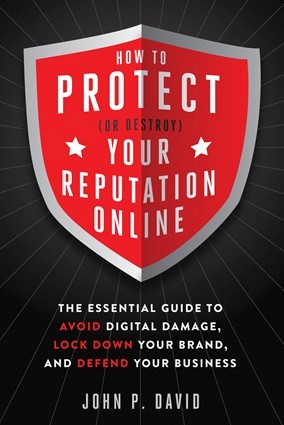The One Strategic Mistake Your Company is Likely Making
Do you know what your company’s core values are?
You know, those ten to fifteen statements that are supposed to be the guiding principles that dictate the behavior and actions of your company? The foundation from which you are supposed to be ‘Built to Last’ and help you make your most important decisions? Could you recite them out loud right now without looking them up?
I didn’t think so.
Chances are your CEO can’t either. And I think that’s pretty sad. It’s part of the reason why most companies are mediocre. Most people, like your CEO, would say that having core values in business is important. However, very few are actually living them… not because they don’t have any but because of the opposite – they have too many. People can’t remember them all and so they forget. And if you forget what your core values are then you aren’t making decisions using them.
Stop confusing people.
Steve Jobs said it best: “Marketing is about values. This is a very complicated world. It’s a very noisy world… And so we have to be really clear on what we want [the world] to know about us.” And it’s not just about marketing. It’s everything. Your core value should be the lens through which you see the world and make all important choices. By having fifteen “core” values that nobody remembers, you’re needlessly complicating things for your constituents over who you are, what decisions are best for the business, and how to talk about your company. You’re confusing your team and everyone else around you.
What’s the solution?
Get it down to One Word. Whether it’s #Innovation (3M), #Love (Starbucks), or #Health (CVS), having a single guiding value helps communicate to your team, your customers, and the world what you stand for. It also helps make the big decisions easier like being one of the first big companies to stand up for gay marriage (Starbucks, #Love) or walking away from $2 billion in annual tobacco sales because it doesn’t align with your One Word core value (CVS, #Health).
This might be painful.
If you’re at an organization that hasn’t ever really dug into what’s most important then turning those fifteen core values from a plaque on a wall to an actionable, meaningful One Word, will be difficult. People will disagree. Some may quit. Others might be asked to move on. But until companies start looking beyond the resume, beyond the skills, and start looking at do our people’s values match up with what we stand for as an organization, then all the other strategies and tactics won’t save your business.
Get your One Word right. Apply it as the operating philosophy through which your entire company is run. Give your team, customers, and investors something to actually be proud of. And watch your culture, impact, and profits soar.
About the Author
Evan Carmichael is the author of Your One Word (December 6, 2016), and he also coaches entrepreneurs for peak performance. At 19, he built then sold a biotech software company. At 22, he was helping raise $500k to $15mil. He has been interviewed or featured as an entrepreneur expert in The New York Times,The Wall St. Journal, Forbes, Mashable, and elsewhere. He now runs EvanCarmichael.com, a popular website for entrepreneurs. He speaks globally and is based in Toronto. You can find him on Twitter @EvanCarmichael.

 1. Build your reputational firewall
1. Build your reputational firewall For more than 25 years,
For more than 25 years,  Power Stars to Light the Business Flame, by Hank Moore, encompasses a full-scope business perspective, invaluable for the corporate and small business markets. It is a compendium book, containing quotes and extrapolations into business culture, arranged in 76 business categories.
Power Stars to Light the Business Flame, by Hank Moore, encompasses a full-scope business perspective, invaluable for the corporate and small business markets. It is a compendium book, containing quotes and extrapolations into business culture, arranged in 76 business categories. Sharon Drew Morgen is a visionary, original thinker, and thought leader in change management and decision facilitation. She works as a coach, trainer, speaker, and consultant, and has authored 9 books including the New York Times Business Bestseller Selling with Integrity. Morgen developed the Buying Facilitation® method (
Sharon Drew Morgen is a visionary, original thinker, and thought leader in change management and decision facilitation. She works as a coach, trainer, speaker, and consultant, and has authored 9 books including the New York Times Business Bestseller Selling with Integrity. Morgen developed the Buying Facilitation® method ( Marc Williams is a second generation owner of Williams Helde Marketing Communications in Seattle. Founded in 1969, Williams Helde is a marketing communications agency focused on inspiring, connecting and awakening the active healthy lifestyle inherent in every great brand. You can learn more about this audience and download the latest report focused on travel at
Marc Williams is a second generation owner of Williams Helde Marketing Communications in Seattle. Founded in 1969, Williams Helde is a marketing communications agency focused on inspiring, connecting and awakening the active healthy lifestyle inherent in every great brand. You can learn more about this audience and download the latest report focused on travel at